#Awka-Nri
Text
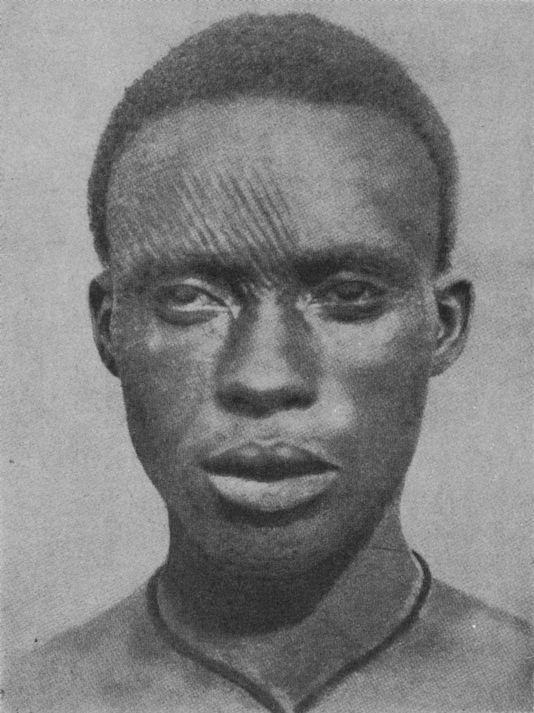
Ichi was a form of facial ritual scarification worn by mainly men of the Igbo people of Nigeria. The scarification indicated that the wearer had passed through initial initiation into the aristocratic Nze na Ozo society, thus marking the wearer as nobility. Echoes of this tradition are found in the contemporary derivative word Ichie, which denotes a member of a class of titled chieftains amongst the Igbo.
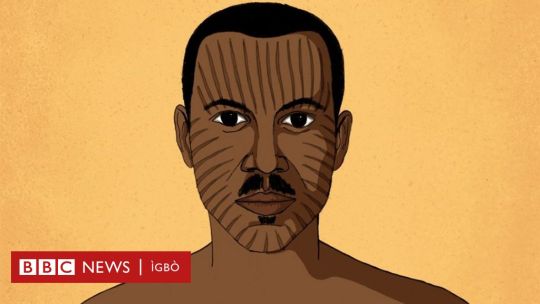
The scarification was found among men in the Awka-Nri areas and among a few women in the Awgwu and Nkanu areas. Its wearers were authorized to perform ritual cleansing of abominations and to confer titles on people. People with facial marks were regarded as Nri men and were less likely to be taken as slaves. Other parts of Igbo land may have started wearing Ichi as a result of this. There are two styles; the Nri style worn in the Awka-Nri areas, and the Agbaja style worn in the Awgwu and Nkanu areas. In the Nri style, the carved line ran from the center of the forehead down to the chin. A second line ran across the face, from the right cheek to the left. This was repeated to obtain a pattern meant to imitate the rays of the sun. In the Agbaja style, circles and semicircular patterns are added to the initial incisions to represent the moon. These scarifications were given to the representatives of the eze Nri; the mbùríchi. The scarifications were the Nris' way of honoring the sun that they worshipped and was a form of ritual purification.
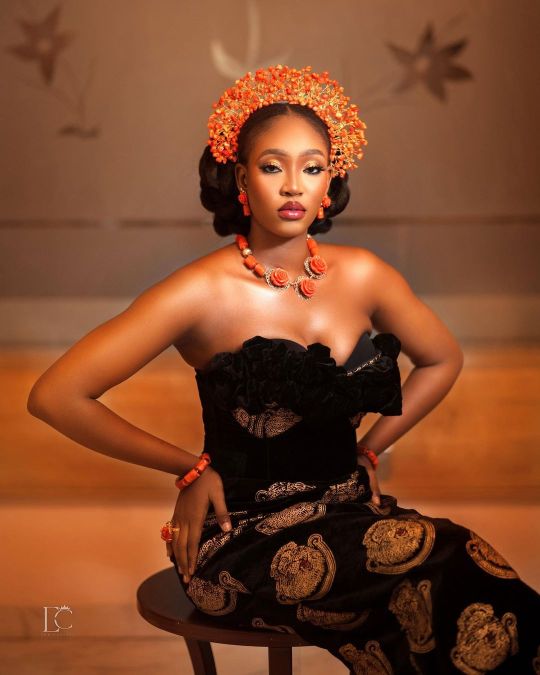
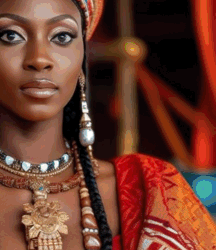
#african#afrakan#africans#kemetic dreams#brownskin#afrakans#brown skin#african culture#afrakan spirituality#ichi#scarification#tribal art#tribal tattoo#nzi#igbo#igbo culture#Nze na Ozo#Nri#Awka-Nri#eze Nri#mbùríchi#titled chieftains#nobility#Nigeria
38 notes
·
View notes
Text
youtube
African American in Awka Nigeria marrying his African Igbo Queen. This episode is about paying of my wife dowry and it being accepted by the high chief according to native law. This is a traditional african wedding

1 note
·
View note
Text
Igwe Credo Biography, Education, Career, Controversies, And Net Worth
Born on March 2nd in Awka, Anambra State, Nigeria, Igwe Credo Mbem, known as AKA JI OFOR AROBINAGU NWA NRI, is a vibrant Igbo performer, singer, and manager of Ojazzy Igbonile.
Raised in a family of traders, he discovered his passion for music during his school years at St. John’s Primary School and St. Paul’s Secondary School in Awka. Influenced by iconic Igbo musicians like Osita Osadebe and…

View On WordPress
0 notes
Text
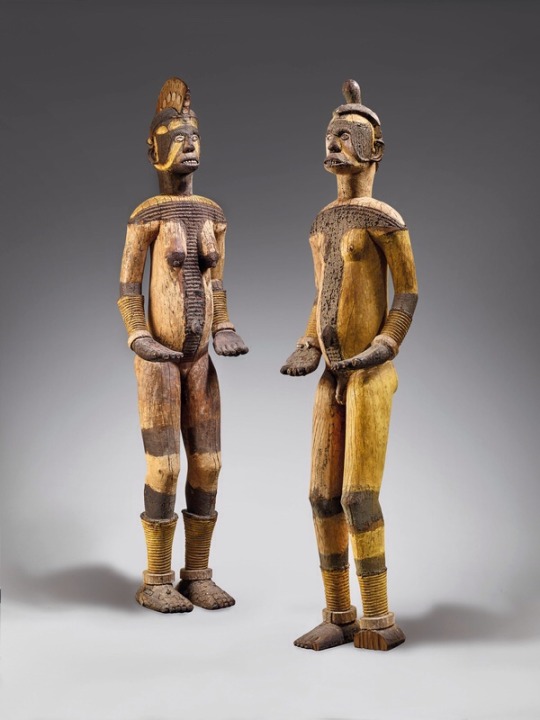
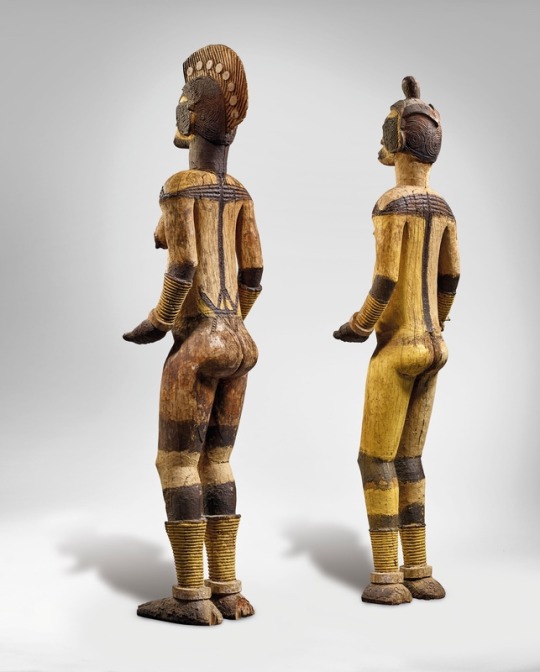
Paire de statues Igbo attribuée au Maître d'Awka, Région de Nri-Awka, Nigéria. Hauteurs : 161 et 166 cm. (63 3/8 and 65 3/8 in.).
Courtesy Alain Truong
1 note
·
View note
Photo
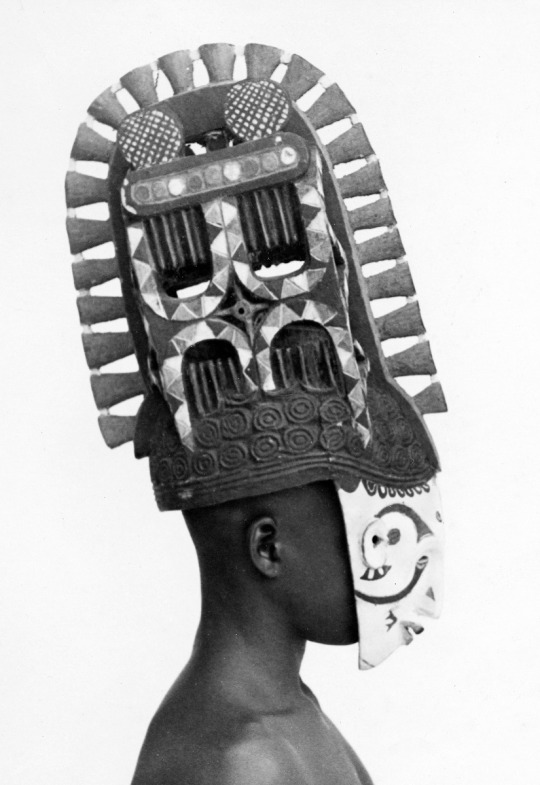
um garoto portando uma máscara igbo chamada agbogho mmuo (espírito virgem), início do século 20, edward duckworth.
agbogho mmuo ou espíritos virgens são espetáculos anuais encenados durante a estação seca na região de nri-awka, na nigéria. encenados estritamente por homens com máscaras, imitam o caráter das adolescentes, exagerando a beleza e movimentos das meninas. o espetáculo é sempre acompanhado por músicos que cantam e tocam em homenagem a virgens temporais e espirituais.
3 notes
·
View notes
Photo





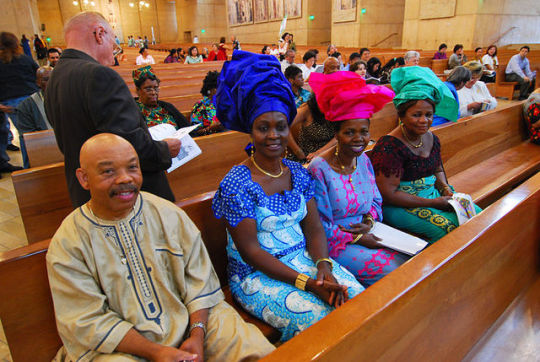


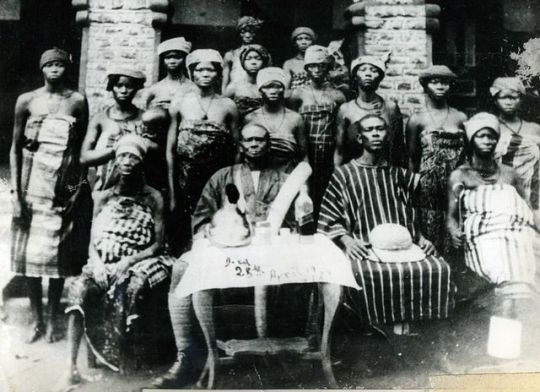


The Igbo people (English: /ˈiːboʊ/; also Ibo, formerly also Iboe, Ebo, Eboe, Eboans, Heebo; natively Ṇ́dị́ Ìgbò [ìɡ͡bò] ) are an ethnic group native to the present-day south-central and southeastern Nigeria. Geographically, the Igbo homeland is divided into two unequal sections by the Niger River – an eastern (which is the larger of the two) and a western section. The Igbo people are one of the largest ethnic groups in Africa.
Before British colonial rule in the 20th century, the Igbo were a politically fragmented group, with a number of centralized chiefdoms such as Nri, Arochukwu, Agbor and Onitsha. Frederick Lugard introduced the Eze system of "Warrant Chiefs". Unaffected by the Fulani War and the resulting spread of Islam in Nigeria in the 19th century, they became overwhelmingly Christian under colonization. In the wake of decolonisation, the Igbo developed a strong sense of ethnic identity. During the Nigerian Civil War of 1967–1970 the Igbo territories seceded as the short-lived Republic of Biafra. MASSOB, a sectarian organization formed in 1999, continues a non-violent struggle for an independent Igbo state.
Small ethnic Igbo populations are found in Cameroon and Equatorial Guinea, as well as outside Africa. Chambers (2002) argued that many of the slaves taken from the Bight of Biafra across the Middle Passage would have been Igbo. These slaves were usually sold to Europeans by the Aro Confederacy, who kidnapped or bought slaves from Igbo villages in the hinterland. Igbo slaves may have not been victims of slave-raiding wars or expeditions, but perhaps debtors or Igbos who committed within their communities alleged crimes. The Igbo were dispersed to colonies such as Jamaica, Cuba, Saint-Domingue, Barbados, the future United States, Belize and Trinidad and Tobago, among others. Elements of Igbo culture can still be found in these places.
1. Igbo Nigerian wedding
2. Igbo man with facial scarifications, called ichi. Photo by by Northcote Thomas, late 19th-early 20th century
3. Igbo brides (click to enlarge)
4. Igbo woman from Awka, Nigeria ca. 1935
5. Three Igbo women, early 20th century
6. Igbo Roman Catholics in the Cathedral of Our Lady of the Angels, Los Angeles, California
7. A modern Igbo wedding, Nnewi, Nigeria
10. An Igbo woman wearing brass anklets called ogba. These are fashion, not punishment.
11. Igbo people celebrating the New Yam festival in Dublin, Ireland
#fashion#igbo#nigeria#nigerian fashion#africa#african fashion#jewelry#subsaharan africa#subsaharan african fashion#headdress#i mean#you could argue the anklets are BOTH fashion AND punishment#that's how i feel about high-heeled shoes
218 notes
·
View notes
Photo
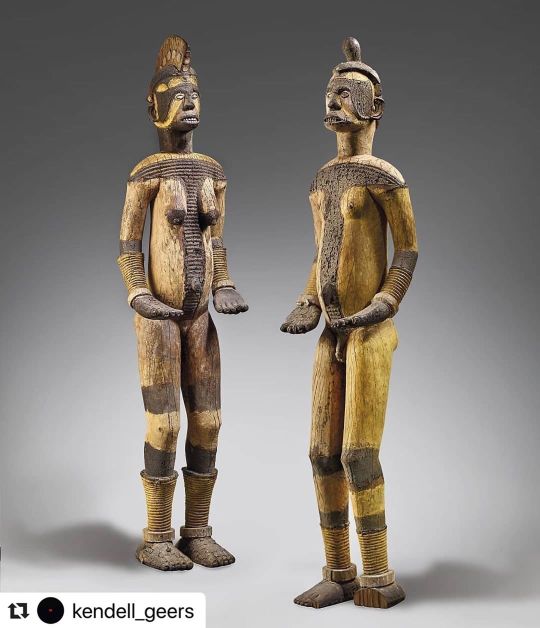
40 Acres & a mule. Reparations Now! Hear this! Hear this! Equally, we demand @christiesinc you stop looting Africa & her people’s culture by selling these sacred African sculptures. Return this Sacred Art. Stop looting Africa.You cannot profit from stolen art! I have seen Sacred African sculptures being sold @laartshow 🤯 for high prices & poster-sized photographs by white American photographers of African children sold for thousands of dollars as art! This has to stop! #decolonize #stoplootingafrica #stoplootingblacklives #fortyacresandamule #reparations #reparations2020 #Repost @kendell_geers Reposted from @chikaokekeagulu In a 2017 op-ed article in the New York Times, I wrote about widespread looting of art from Eastern Nigeria during the Biafran War (1967-70), and that my mother still mourns the overnight disappearance of countless alusi (sacred sculptures) from communal shrines in my hometown, Umuoji, in Anambra State. These art raids from all indications were sponsored by dealers and their client collectors mostly based in Europe and the US. It turns out that later this month the venerable Christie's will auction two of these impressive alusi (seen here) said to have been acquired in 1968-69 in situ by Jacques Kerchache (1942-2001). That is, Mr. Kerchache acquired these sculptures in the Nri-Awka area (a half-hour drive from my hometown) during the darkest years of the Biafran War. Dear Christie's, let’s be clear about the provenance of these sculptures you want to sell. While between 500,000 and three million civilians, including babies like me, were dying of kwashiorkor and starvation inside Biafra; and while young French doctors were in the war zone establishing what we now know as Doctors Without Borders, their compatriot, Mr. Kerchache, went there to buy up my people’s cultural heritage, including the two sculptures you are now offering for sale. I write this so no one, including Christie's and any potential buyer of these loots from Biafra can claim ignorance of their true provenance. These artworks are stained with the blood of Biafra’s children. #christies #warloots #biafranwar https://www.instagram.com/p/CBWPh9lpsqc/?igshid=1gzx413blolgo
#decolonize#stoplootingafrica#stoplootingblacklives#fortyacresandamule#reparations#reparations2020#repost#christies#warloots#biafranwar
0 notes
Text
One killed, two escape death as flood ravages Anambra capital

At least, one person lost his life, while two others escaped death by flood after a torrential rainfall hit Awka, the capital of Anambra State, yesterday, flooding the entire city.
Also, over 10 vehicles were swept into drainage canals as a result of the rainfall, which began at about 5pm.
It has been gathered that an unknown man who was said to be a visitor to Awka decided to seek refuge in a hotel in Awka before continuing his journey the next day as a result of the heavy rainfall, but mistakenly missed his steps while crossing the drainage and was swept into the drainage canal.
Residents of UNIZIK junction area, who spoke to our correspondent, said the body of the unidentified victim was found on Wednesday morning at Iyiagu drainage were the flood had dumped him.
“Usually, that place is where even dirt are dumped when they get thrown into drainages. So this morning we decided to go there and check, and behold, we saw the man. He is a grown up man, and there was nothing on him with which we could identify him,” a resident of the area said.

Also, In Amawbia community near Awka, about 400 school pupils were cut off from their school as they could not access their schools on Wednesday after a major drainage in the area was cut by the flood.
Meanwhile, just last week, two children were saved from their untimely death after a heavy rain swept them into a gully as they were coming back from the farm, and it took the timely intervention of workers at a building site to save the situation.
According to one of the children, Miss Tochi Nwanna, 16 years old, “We were carrying firewood and the flood was too much and we did not know where to step on and suddenly my younger brother fell into the flood and when I tried to hold him, I did not know how I fell in also”.
Meanwhile, over 300 families have been sacked by the gully erosion occasioned by flood disaster in six villages of Amawbia Community in Awka South Local Government area of Anambra State.
The community has also been cut off from its kits and kins in the neighboring, Nise, Nibo, Umuokpu and Agukwu Nri towns
According to the Director Community Environmental Media Awareness (CEMA) Mr. Okey Maduforo, “The situation needs urgent attention by the state government before the entire community is sacked.
“Also affected by the erosion are, Union secondary school, Kabe College, May Rose Hotel as the link roads to those public facilities have become inaccessible by motorists and other road users in Adebebe village.”
Read the full article
0 notes
Text
Awka, Anambra State, Nigeria. #JujuFilms
Awka, Anambra State, Nigeria.��#JujuFilms
Awka has a certain kind of aura about it, because it was the place of the blacksmiths that created implements which made agriculture possible. — Chinua Achebe
Awka is one of the oldest settlements in Igboland established at the centre of the Nri civilization which produced the earliest documented bronze works in Sub-Saharan Africa around 800 AD and was the cradle of Igbo civilization.
The…
View On WordPress
2 notes
·
View notes
Text
Ụ́kpụ́rụ́: BHM Guide
BHM Topics Centring on Igbo History and Culture.
Lejja: 4000 Year Old Iron Smelting Site
Tag: #metallurgy | #metalwork
Archaeological investigations at the prehistoric iron smelting site of Lejja, Nigeria, made possible the study of some large scale iron smelting debris – evidence of a once thriving iron smelting community. The main village square in Lejja, contains over 800 slag blocks weighing between 34 and 57 kg. Furnaces, tuyères and slag are visible on the surface in many places. The site has been radiocarbon dated to approximately 2000 BC. [more+]
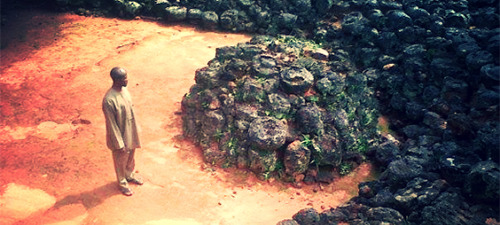
Lejja village square [+]
Igbo Ukwu
Tag: #igbo ukwu
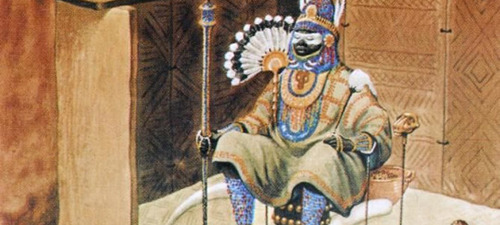
9th century nobleman’s tomb [+]
It is possible that the inhabitants of Igbo-Ukwu had a metalworking art that flourished as early as the ninth century (though this date remains controversial). Three sites have been excavated, revealing hundreds of ritual vessels and regalia castings of bronze or leaded bronze that are among the most inventive and technically accomplished bronzes ever made.
— Met Museum [more+]
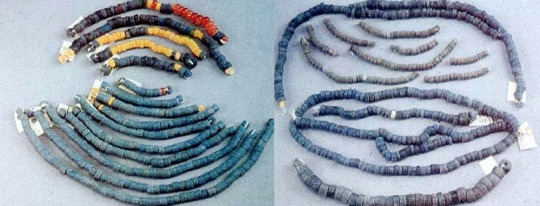
More than 165,000 beads of Indian, (medieval) Egyptian, and Venetian/Mediterranean origin points to trans-Saharan trade reaching the Lower Niger in the 9th century. [+]

The coast is 100 miles away from Igbo Ukwu, the presence of a bronze in the shape of a triton shell suggests a sea trade in the Niger Delta area was significant in the 9th century. [+]
>> Some of the oldest fibres of textiles found in western Africa [+]
>> Eri and Nri, Founders of Nri c. 10th century, associated with Igbo Ukwu
Nsibidi: Pre-15th century Ideographic Writing
Tag: #nsibidi
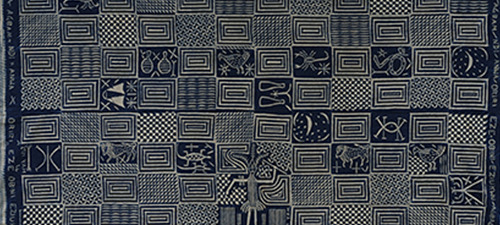
Ukara Nsibidi cloth [+]
Nsibidi is an ancient system of graphic communication indigenous to the Ejagham peoples of southeastern Nigeria and southwestern Cameroon in the Cross River region. It is also used by neighboring Ibibio, Efik and Igbo peoples. Aesthetically compelling and encoded, nsibidi does not correspond to any one spoken language. It is an ideographic script whose symbols refer to abstract concepts, actions or things and whose use facilitates communication among peoples speaking different languages.
— Smithsonian [more+]
>> Jean-Michel Basquiat and Nsibidi [+]
Old Calabar, Bonny and the Slave Trade
Tag: #slavery
The slave trade in the area known as Bight of Biafra (today eastern Nigeria and southern Cameroon) was very significant, millions of people were taken captive in this area and taken to the Americas by Europeans.
The Trade
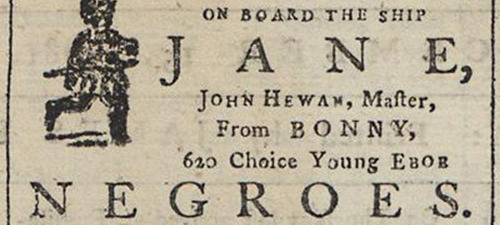
620 enslaved Igbo from Bonny to Montego Bay, Jamaica [+]
>> Port of Bonny
>> Igbo Names on the Amelié, 19th Century Slave Ship, Martinique
>> European Items Traded with Africans in exchange for Captives
>> The Interesting Narrative of the Life of Olaudah Equiano
>> Nancy Daniels survived the Atlantic Crossing
Resistance
>> African Resistance from the Shore and Slave Ship Captures by Africans
>> Ibo Landing, Geogria – Tag: Ibo Landing
>> Bussa’s Rebellion, Barbados – [+] | [+]
>> Igbo Runways in Virginia
>> Monday Gell and the Denmark Vesey Case – [+] | [+]
>> Eboe Rebellion, Jamaica
The Trans-Atlantic Link
Tag: #The Invisible Atlantic Cord

Eze Nri memorial of the enslaved, Virginia [+]
>> West Indian Igbo Words >> Igbo-West Indian Folk Idioms
>> Afro-Virginian Art and the Bight of Biafra >> Awka Metallurgy in America
>> US descendants >> Diaspora Igbo
>> Jaja of Opobo in Barbados
>> Ibo Granmoun: The Roots of Haitian Democracy >> The Igbo in Haiti
>> Eze A. Ogueri II: An African in British Guiana
Colonial Resistance
>> The Story of King Jaja of Opobo (1821-1891)
vimeo
>> The Ekumeku Movement – Tag: #ekumeku
>> Anglo-Aro War – Tag: #anglo-aro war

Re-enactment of the women’s protest, 60th Anniversary of the Women’s War of 1929 [+]
>> Women’s War of 1929
>> Iva Valley Massacre at Enugu – [+] | [+]
Other
| >> Indigenous Technology and Colonialisms Effects
| >> Impact of Indigenous Beliefs about Sacred Animals in the Niger Delta and Cross River area on Wildlife protection
| Folk tales: Asele, The Legendary Designer | Okpangu, The Ape Man | Goddess Idemili | Nza The Smart
| Other tags: #bio | #books | #art | #architecture | #women | #spirituality | #biafra
190 notes
·
View notes
Text

CULTURE SUMMARY: IGBO
By IFI AMADIUME
ETHNONYMS
Ala Igbo, Ani Igbo, Ibo, Ndi Igbo.
IDENTIFICATION AND LOCATION
Igbo is the language spoken in Ala Igbo or Ani Igbo (Igboland) by the people who are collectively referred to as “Ndi Igbo”; their community is known as “Olu no Igbo” (“those in the lowlands and uplands”). Before European colonialism, the Igbo-speaking peoples, who shared similarities in culture, lived in localized communities and were not unified under a single cultural identity or political framework, although unifying processes were present via expansion, ritual subordination, intermarriage, trade, cultural exchange, migration, war, and conquest. Villages and village groups were generally identified by distinct names of their ancestral founders or by specific names such as Umuleri, Nri, Ogidi, Nnobi, Orlu, Ngwa, Ezza, and Ohaffia.
There are several theories concerning the etymology of the word “Igbo” (wrongly spelled “Ibo” by British colonialists). Eighteenth-century texts had the word as “Heebo” or “Eboe,” which was thought to be a corruption of “Hebrew.” “Igbo” is commonly presumed to mean “the people.” The root - bo is judged to be of Sudanic origin; some scholars think that the word is derived from the verb gboo and therefore has connotations of “to protect,” “to shelter,” or “to prevent”—hence the notion of a protected people or a community of peace. According to other theorists, it may also be traced to the Igala, among whom onigbo is the word for “slave,” oni meaning “people.”
Igbo-speaking peoples can be divided into five geographically based subcultures: northern Igbo, southern Igbo, western Igbo, eastern Igbo, and northeastern Igbo. Each of these five can be further divided into subgroups based on specific locations and names. The northern or Onitsha Igbo are divided into the Nri-Awka of Onitsha and Awka; the Enugu of Nsukka, Udi, Awgu, and Okigwe; and those of the Onitsha town. The southern or Owerri Igbo are divided into the Isu-Ama of Okigwe, Orlu, and Owerri; the Oratta-Ikwerri of Owerri and Ahoada; the Ohuhu-Ngwa of Aba and Bende; and the Isu-Item of Bende and Okigwe. The western Igbo (Ndi Anioma, as they like to call themselves) are divided into the northern Ika of Ogwashi Uku and Agbor; the southern Ika or Kwale of Kwale; and the Riverrain of Ogwashi Uku, Onitsha, Owerri, and Ahoada. The eastern or Cross River Igbo are divided into the Ada (or Edda) of Afikpo, the Abam-Ohaffia of Bende and Okigwe, and the Aro of Aro. The northeastern Igbo include the Ogu Uku of Abakaliki and Afikpo.

Today Igbo-speaking individuals live all over Nigeria and in diverse countries of the world. As a people, however, the Igbo are located on both sides of the River Niger and occupy most of southeastern Nigeria. The area, measuring over 41,000 square kilometers, includes the old provinces of Onitsha, Owerri, East Rivers, Southeast Benin, West Ogoja, and Northeast Warri. In contemporary Nigerian history, the Igbo have claimed all these areas as the protectorate of the “Niger Districts.” Thus began the process of wider unification and incorporation into wider political and administrative units. Presently, they constitute the entire Enugu State, Anambra State, Abia State, Imo State, and the Ahoada area of Rivers State; Igbo-speaking people west of the Niger are inhabitants of the Asaba, Ika, and Agbo areas of Delta State.

#african#afrakan#kemetic dreams#africans#brownskin#brown skin#afrakans#african culture#igbos#Ndi Igbo#Ani Igbo#Ala Igbo#Umuleri#Nri#Ogidi#Nnobi#Orlu#Ezza#Ohaffia#nigerian#niger#niger delta
34 notes
·
View notes
Video
youtube
Witness Magic Traditional African Wedding Episode 32! Cruising streets Awka, Nigeria.
African American in Awka, Nigeria marrying his African Igbo Queen. This episode is about cruising the streets of Awka, Nigeria. We will take you where we will be enjoying African Dishes,Entertainment and Music, Drinking original Palm WIne, Eating African Salads basically enjoying what the capital city of Anambra State has to offer. This is a traditional african wedding #nigeria #eri #abuja #awka #igbo #africanamerican #africa #awka #nri #igboweddings #nigerianmoviesonline #travelvlog #travel .
0 notes
Text


PAIRE DE STATUES IGBO ATTRIBUÉE AU MAÎTRE D'AWKA
A COUPLE OF IGBO FIGURES ATTRIBUTED TO THE AWKA MASTER
RÉGION DE NRI-AWKA, NIGERIA
Hauteurs : 161 et 166 cm. (63 3/8 and 65 3/8 in.)
Provenance
Acquise in situ par Jacques Kerchache (1942- 2001), dans les années 1968-1969
Collection Jacques Kerchache, Paris
Ana et Antonio Casanovas & Bernard de Grunne, Madrid/Bruxelles, 2010
Importante collection privée européenne, acquise auprès de ces derniers
Christies
5 notes
·
View notes
Photo
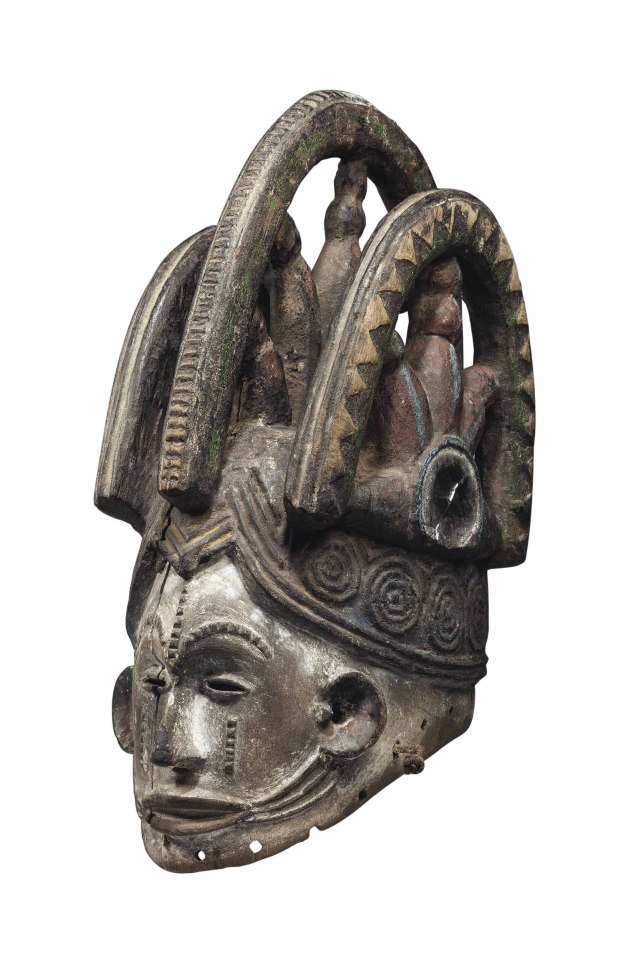
máscara de maiden spirit de agbogho mmuo, igbo, nigéria.
agbogho mmuo ou espíritos virgens são espetáculos anuais encenados durante a estação seca na região de nri-awka no norte do território tradicional dos igbos. também se fazem presentes em funerais de figuras notórias, onde honram o falecido. seu objetivo é entreter o público e reiterar os valores tradicionais dos igbos. encenados estritamente por homens que imitam o caráter das adolescentes, exagerando a beleza e os movimentos. o espetáculo é sempre acompanhado por músicos que cantam e tocam em homenagem a virgens temporais e espirituais.
o espetáculo apresenta uma imagem ideal da jovem igbo. com as faces esbranquiçada, cor associada à pureza, as máscaras reproduzem penteados extravagantes decorados com pentes e outros objetos.
2 notes
·
View notes
Link
Spread the loveLeader of the Indigenous People of Biafra (IPOB), Nnamdi Kanu, was allegedly sent away from the palace of Obidiegwu Onyesoh, the traditional ruler of Nri, a community in Aniocha local government area of Anambra state, for reportedly violating tradition. Speaking with journalists in Awka, the state capital on Thursday, Ifeanyi Onyesoh, personal assistant to […]
0 notes
Photo


[1.] Carving a stool Later stages of the same carving process, Amobia village, Nri-Awka [north-central Igbo area].
[2.] Carving a stool Early stages of carving a stool similiar to the one shown above, Amobia village, Nri-Awka.
— G. I. Jones, 1930s.
40 notes
·
View notes